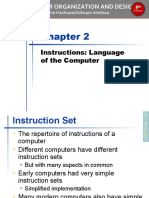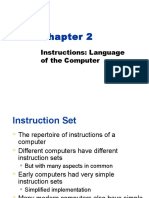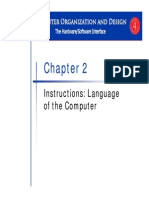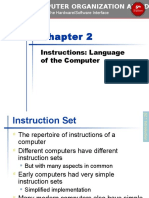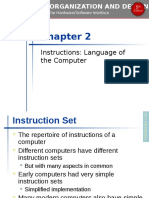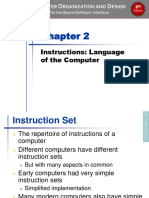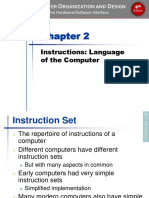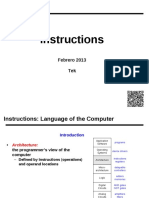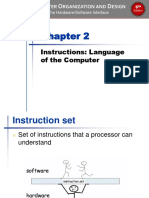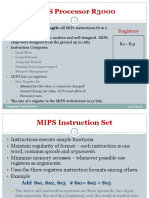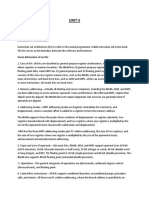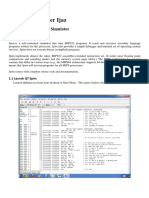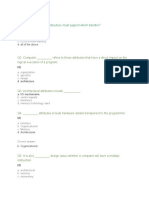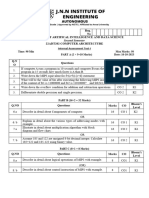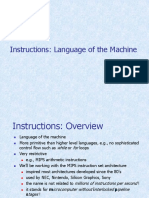0% found this document useful (0 votes)
64 views72 pagesTopic3 CH-02
Chapter 2 of 'Computer Organization and Design' discusses the fundamental concepts of computer architecture, focusing on the Instruction Set Architecture (ISA) and computer organization. It explains the MIPS instruction set as an example, detailing operations, operands, and design principles essential for understanding how computers execute instructions. The chapter also covers memory operands, immediate operands, and the representation of signed and unsigned numbers in MIPS.
Uploaded by
مها الامورةCopyright
© © All Rights Reserved
We take content rights seriously. If you suspect this is your content, claim it here.
Available Formats
Download as PDF, TXT or read online on Scribd
0% found this document useful (0 votes)
64 views72 pagesTopic3 CH-02
Chapter 2 of 'Computer Organization and Design' discusses the fundamental concepts of computer architecture, focusing on the Instruction Set Architecture (ISA) and computer organization. It explains the MIPS instruction set as an example, detailing operations, operands, and design principles essential for understanding how computers execute instructions. The chapter also covers memory operands, immediate operands, and the representation of signed and unsigned numbers in MIPS.
Uploaded by
مها الامورةCopyright
© © All Rights Reserved
We take content rights seriously. If you suspect this is your content, claim it here.
Available Formats
Download as PDF, TXT or read online on Scribd
/ 72



